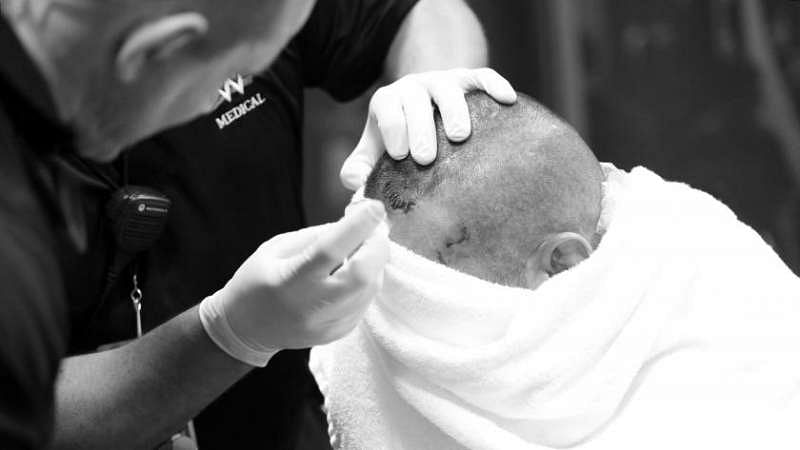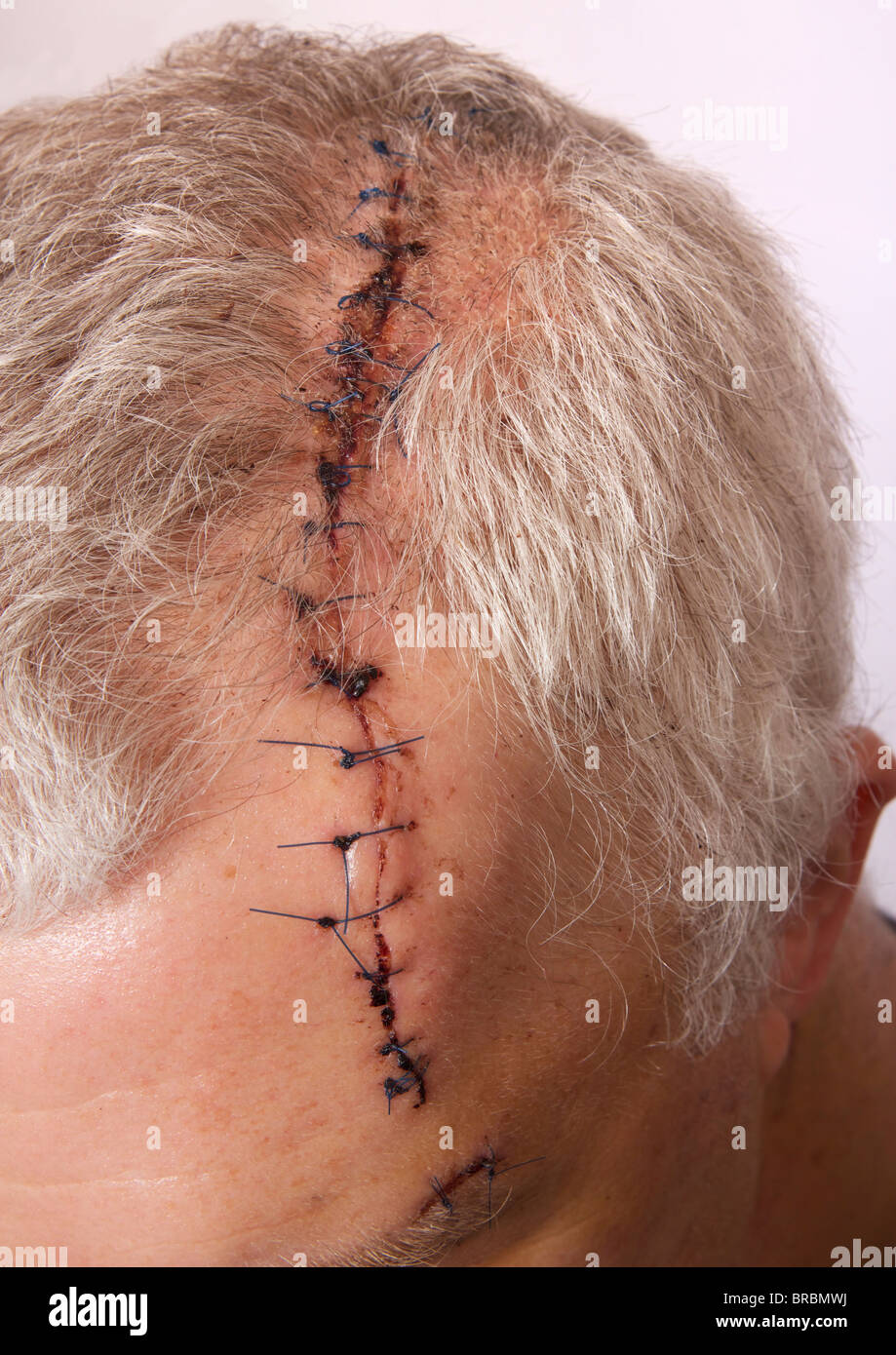

I've personally had both staples and stitches and the same operation done twice, the first time with stitches, second with staples. Staples aren't necessarily used because of laziness Jeff and I don't believe there's a section on consent forms where you can request the type of wound closure you want, so that is just ridiculous to me. Should be removed in approximately the same time as sutures this is done
Stapled head wound skin#
Held against the wound at the point at which the staple is to be placed.īy squeezing the trigger on the stapling device, the staple isĪutomatically placed into the skin the depth of placement is controlledīy how hard the stapling device is held against the skin. The edges of the wound are aligned and held together The wound is first cleaned of dead tissue and foreign bodies and washed Staples are placed with theĪid of a stapling device that generally holds between 5 and 25 staples.įorceps are also necessary to help align the edges of the wound togetherĪnd hold them in place until staples can be placed. Wound, and tips that hold the staple in place. That lies parallel to the skin, two legs that enter each edge of the Individual staples are composed of stainless steel and have a crossbar Additionally, staples may be used to connect cutĮnds of larger blood vessels or segments of the bowel. Legs, abdomen, back, or scalp wounds on the hands, feet, neck, or face Common locations of wounds that may be stapled are the arms, It is, however, more difficult to correctlyĪlign the edges of a wound for stapling, and staples generally cost more Staples are also associated with a lower risk of infection and Placement-stapling is approximately three to four times faster than Strips of adhesive tape may be placed over the wound to help support theĪ distinct advantage that staples have over sutures is their quick Should be removed in approximately 5 days sutures on the legs andĪbdomen, in 7 to 10 days and sutures on the back, in 10 to 14 days. Nonabsorbable stitches should be removed several days to weeks after their They may be placed at different angles and depths. Interrupted (each stitch is separately placed, tied, and cut) orĬontinuous (one continuous piece of thread composes all the stitches) Wounds resulting fromĪn injury must be cleaned before closure dead tissue and foreign bodiesĪre removed and the area is cleansed with an antiseptic.

The needle) and forceps (for manipulating tissue). Scissors (for cutting suture thread) a needle holder (for manipulating Several instruments are necessary for proper woundĬlosure, including dissecting scissors (for cleaning the wound) suture Of the wound and type of tissue to be sutured, basic suturing technique While various stitching techniques may be used depending on the location Such easily damaged tissues as the liver). Such easily penetrable tissues as the subcutaneous layers), or blunt (for Needle may be cutting (for such tougher tissues as the skin), rounded (for In length from less than 0.1 in (2 mm) to 2.4 in (60 mm). Permits easier manipulation through tissues by the clinician. Straight or curved the most commonly used shape is the semicircle, which

Through which suture material is threaded, or they come with suture threadĪttached at one end this connection is called a swage. Suture needles may resemble a conventional sewing needle with an eye While threads with a larger diameter are required for subcutaneous Very fine suture threads are used to close cuts on the face, Suture thread is made of various natural or syntheticĬomponents and comes in different diameters for use in different types of They are generally used for skin and removed once the wound has Retain their strength for months to years and may never be absorbed by the Useful for the suturing of subcutaneous tissues. Weeks and are eventually absorbed by the tissue. Absorbable stitches lose their strength in a matter of days or Suture thread is often characterized by how long it retains its strength The two main components of suture materials are the needle and Suture materials have various characteristics that determine their Sutures, as stitches are often called, are the way that most wounds areĬlosed.


 0 kommentar(er)
0 kommentar(er)
